Once our accommodation and washing were sorted out, we were able to forget the hassles and get on with our holiday. Szentendre, the village where we are staying, is only a half an hour’s drive from Budapest – not a very scenic route admittedly, but a very convenient location if you don’t want to stay in the city.
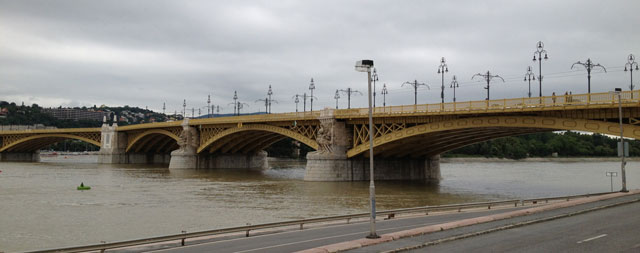
Parking in Budapest is more problematic as we have only found one underground parking lot so far and our GPS had a hard time finding the entrance. However, street parking is quite easy to find, mainly because it’s relatively expensive at 440 florints (1.50 euros) an hour and limited to 3 hours.
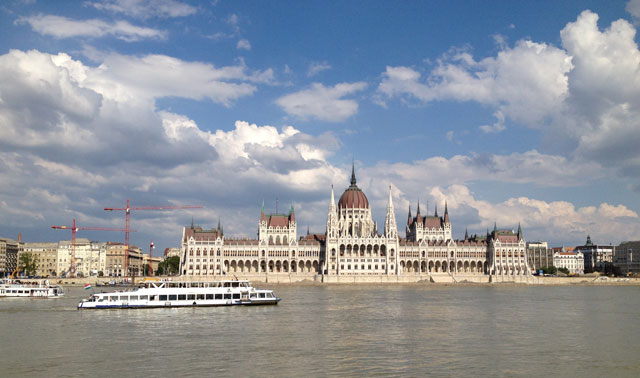
Budapest, as you may know, is the unification of two towns, one on either side of the Danube – Buda on the west bank and Pest on the east – connected by Széchenyi Chain Bridge. Not that I know how to pronounce it. In fact, the Hungarian language is a great difficulty for me. I can’t remember simple things such as hello, goodbye, please and thank you because they won’t stay in my head. So I nod and smile a lot.
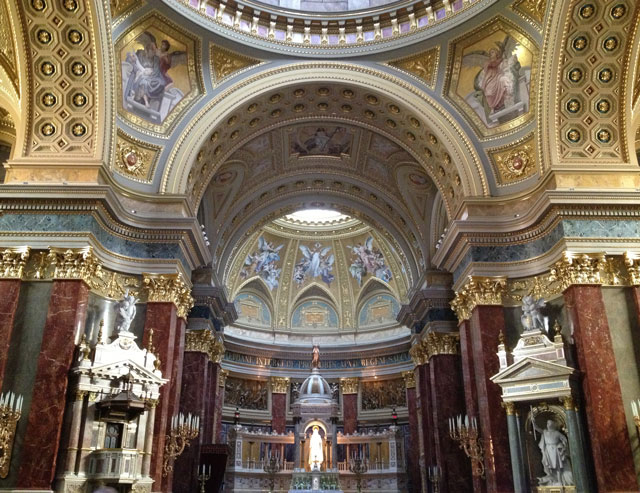
We started our visit of Budapest in Pest, simply because that is where the guide book began. We walked halfway across the yellow bridge (actually the Margit Bridge) and looked across at the iconic Gothic Revival Parliament building which, like a lot of Budapest, is undergoing renovation.
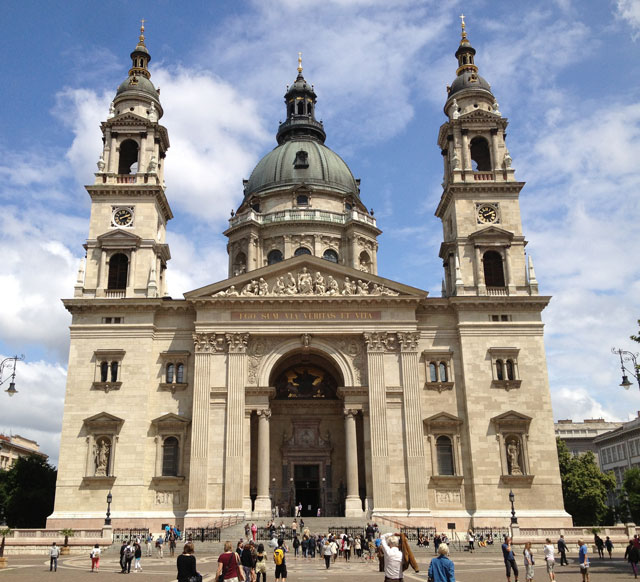
We visited Saint Stephen’s Basilica (also called Cathedral), the largest church in the city which can hold up to 8,500 people and was completed in 1906.

This was the saddest thing we saw in Budapest. The Shoes on the Danube Promenade is a memorial concept by film director Can Togay and was created by him and the sculptor Gyula Pauer on the bank of the Danube River in Budapest. It honors the Jews who were killed by fascist Arrow Cross militiamen in Budapest during World War II. They were ordered to take off their shoes, and were shot at the edge of the water so that their bodies fell into the river and were carried away.
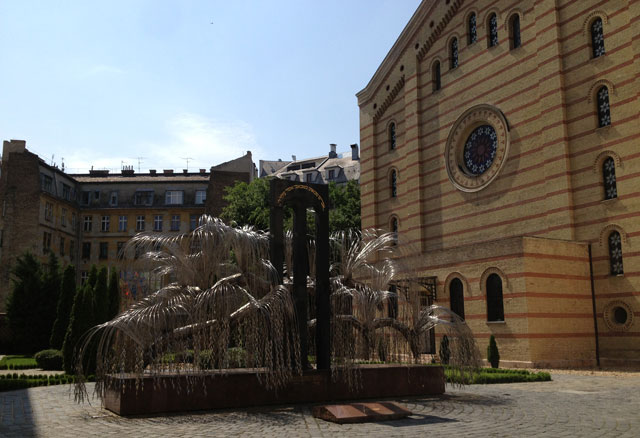
Another Jewish memorial in front of the main synogogue decicated to the 600,000 Hungarian Jews who perished under the Nazis.
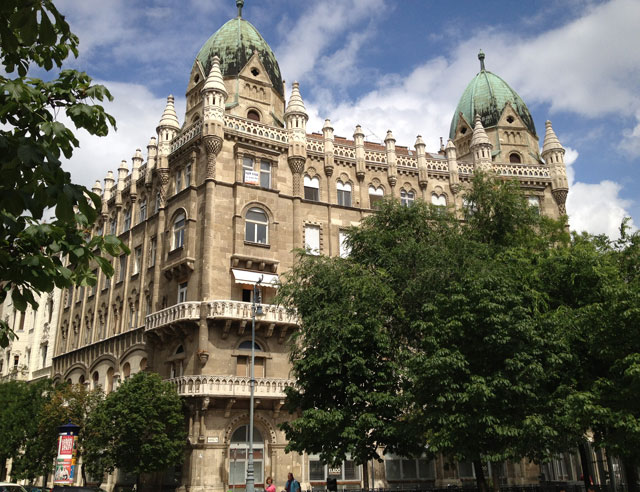
One of the many large ornate buildings in Budapest that have been renovated, on Szabadsag Ter, the largest and most representative square in downtown Budapest.

I thought this was a wonderful example of recycling in the Jewish quarter of Budapest which still has many dilapidated buildings.
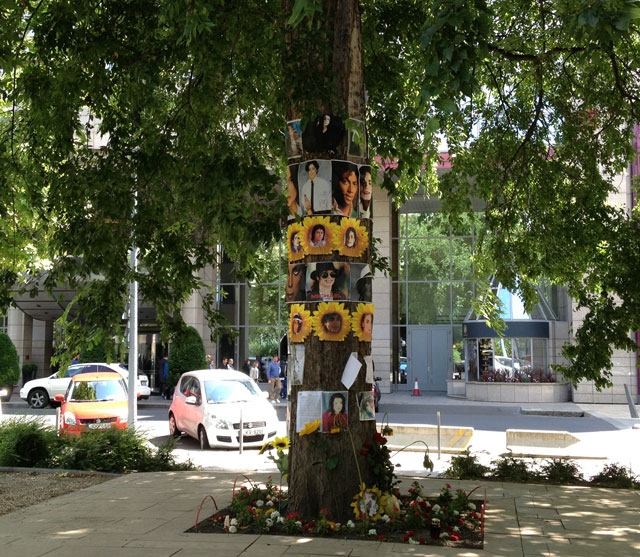
The Michael Jackson tree in Vorosmarty Ter just behind Saint Stephen’s Basilica
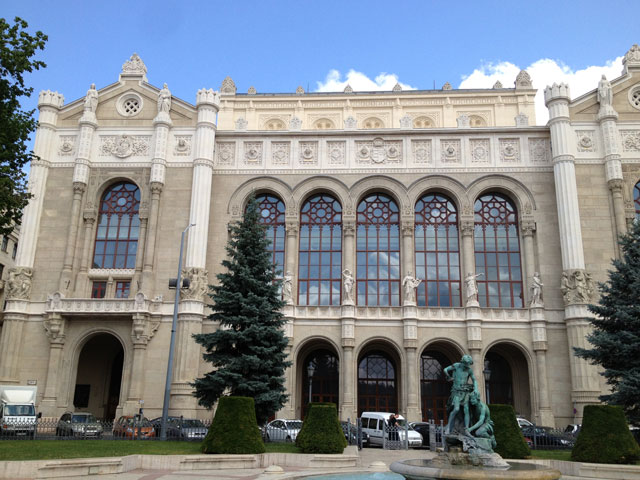
Gresham Palace, a beautiful example of art nouveau architecture in the manner of the Vienna Seessionists, now the Four Seasons Hotel.
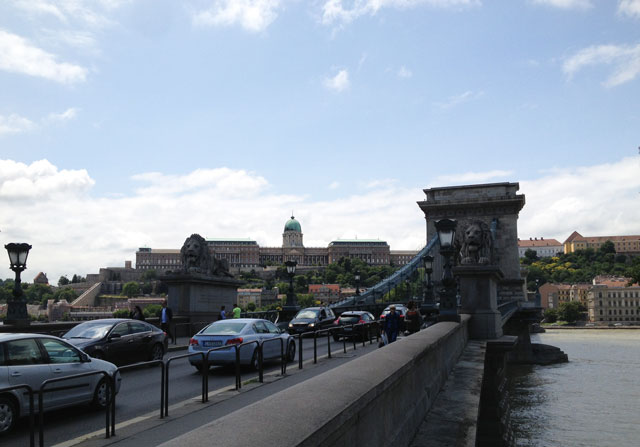
The Széchenyi Chain Bridge, inaugurated in 1849 and the first bridge to connect up Buda and Pest. The architect is said to have committed suicide when he discovered the two lions had no tongues.
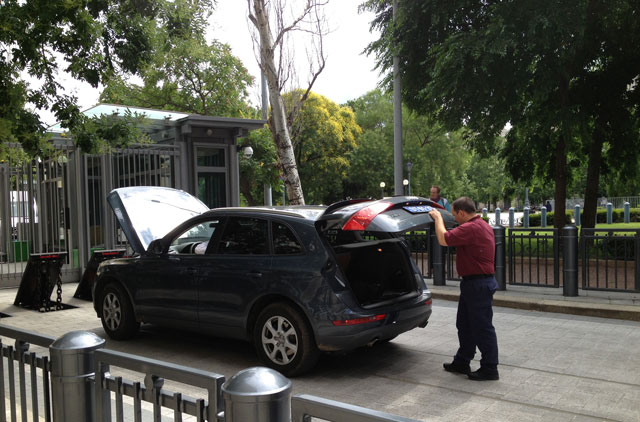
An amazing security check on vehicles entering the Bank of Hungary. The security guard walked around the car with a large mirror on a stick so he could look underneath!
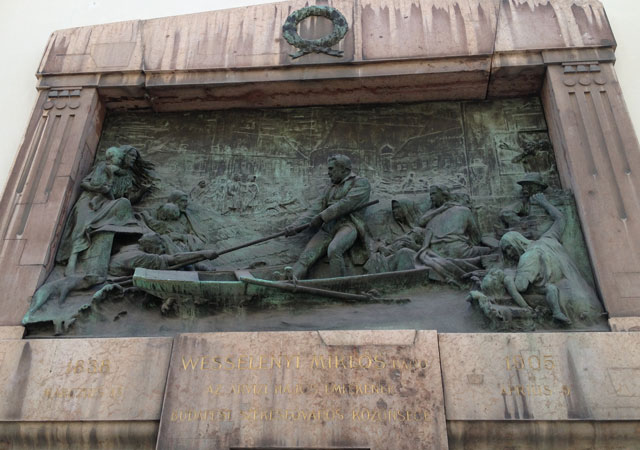
2013 is not the only time that the Danube has overflowed its banks and flooded the city. This plaque commemorates a previous flood in 1838!




Living in London, and working where I did, I saw security checks like that frequently. My office had bomb ‘proof’ film on the windows too.
This is all strengthening my wish to visit Hungary. The shoe memorial is extremely evocative and moving. I love the recycled pallets, and the Gresham Palace. It all looks most interesting.
It is – and I haven’t talked about Buda yet!
I didn’t realise it sounded that surreal! We stopped at Auchan (yes, Auchan!) on the way home that day and bought ourselves a bottle of very nice tokai which we finished off tonight on our private terrace in Austria overlooking (well, you have to stand up to see it properly) the Danube.
I visited Budapest in 2006 with friends . We were on an Insight Tour. The Polish woma in charge of the tour told us that the shoe momument was a memorial for the jewish adults children who were told to stand there and were shot dead by the Nazis. This memorial has stayed in my memory as the most moving I have seen ever. The Parliament must also be one of the best know buildings in the world – once seen , never forgotten.
I found it extremely upsetting and was upset seeing a young couple taking photos of each other in front SMILING. I checked the origin. Widipedia says: The Shoes on the Danube Promenade is a memorial concept by filmdirector Can Togay and was created by him and the sculptor Gyula Pauer on the bank of the Danube River in Budapest. It honors the Jews who were killed by fascist Arrow Cross militiamen in Budapest during World War II. They were ordered to take off their shoes, and were shot at the edge of the water so that their bodies fell into the river and were carried away. It represents their shoes left behind on the bank. I shall correct the post to give that information.
Dear Rosemary
Finally home, for a few weeks at least, and beginning to catch up. Loving all your holiday posts and pics. Have you read Patrick Leigh Fermor’s book “A Time of Gifts” about his walk across Europe, aged 18? Including his walk along the Danube and visit to Melk? He was a great friend of Debo Devonshire and there’s also a wonderful volume of their letters to each other “In Tearing Haste” that you’d probably enjoy.
There’s a similarly sad memorial in Cracow, not shoes, but old chairs. Holocaust victims were rounded up into a little square for transportation. They were detained for a while, so some managed to bring chairs. Finally they were taken off to the camps, never to return, leaving just the empty chairs.
Budapest is such a beautiful city and we had a wonderful holiday there last year, staying in the Bohem Art Hotel (which we loved – comfortable, great breakfasts and very friendly and helpful staff), very close to the Danube. Our daughter-in-law’s parents were Hungarian so we had booked a private tour car and driver, particularly skilled in tracing family roots and connections. Visited some wonderful old towns way off the usual tourist tracks that were special family places and even located her father’s birthplace in a tiny village far out in the farmlands and forests. Our last evening we were invited to dine with her father’s younger brother – and all his family – and they treated us and our fabulous driver Zoltan like long lost relatives. Plying us with Tokaj, including a bottle to take away.
Warmest wishes, Pamela
Hello Pamela,
Thank you for the book suggestion, I’ll definitely follow it up.
What a wonderful experience you had in Hungary – so much better than being regular tourists.
All the best
Rosemary
Great pictures. You have a good camera. I love the style. Thanks for sharing.